 |
SRGC Bulb Log Diary |
| Home Recommend This Site To A Friend |
|
BULB LOG 29 -- 14th July 2004-07-14 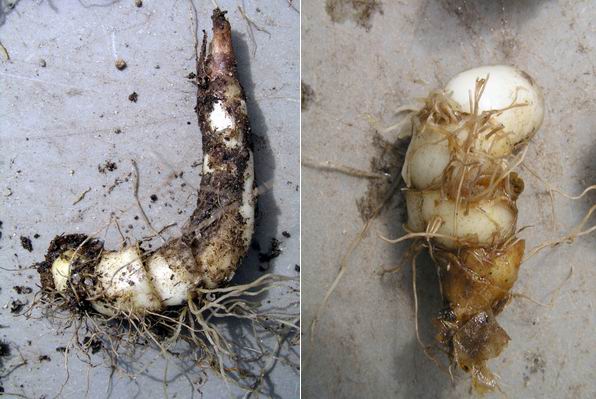 E. dens canis bulb The re-potting of our bulbs is well under way now and I just love seeing and studying their growth. This is a typical Erythronium dens-canis bulb, notice the chain like structure which is the remains of previous years growth. On the right I have removed the new bulb and you can see the chain has five links this represents the last five years of growth. I am going to plant a group of these chains to see if there are any dormant buds that will grow into a new bulb. I have tried this with Erythronium montanum, which also forms a chain from the remains of old bulbs. This proved very successful with several new bulbs forming on the chain. 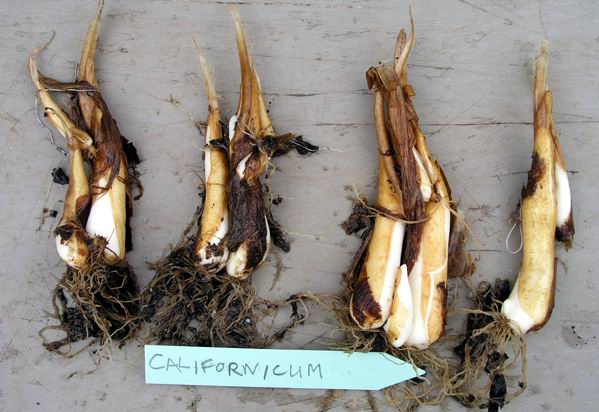 Erythronium californicum bulbs One of the reasons that I like to raise hundreds of Erythroniums from seed is to select out forms that will increase vegetatively. It takes many species several years to form a clump and some remain as a single for ever. 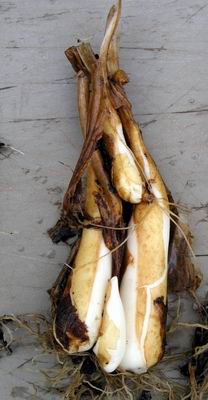 Erythronium californicum x4 This is a good example of what I am looking for, a bulb that has four offsets; two will flower next year while the other two will flower in two years. Once I have good increasers I can use them as a seed stock to breed future plants from. 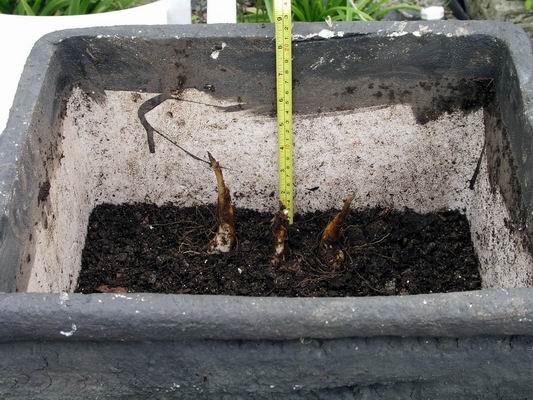 Planting Erythronium This picture is to show you how deep I plant even the seedling erythronium bulbs, over 20cms deep. Even at that depth they will take themselves to the bottom of the box in two years. 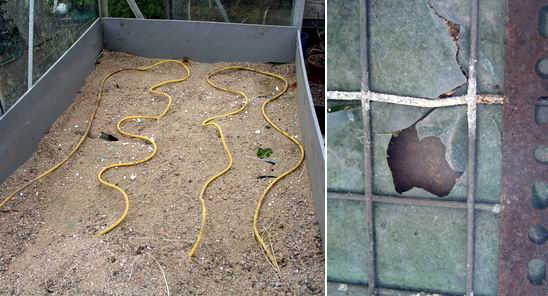 Holes in plunge I have a bit of a problem in the bulb house. The base of the plunge is made from wire weld mesh with thick polythene sheeting holding in the sand. Unfortunately, after 20 years, the polythene has degraded in the light and become brittle so I have had to remove all the sand. It is a good chance to show the warming cables that we have as a protection against the plunge freezing through in the winter. 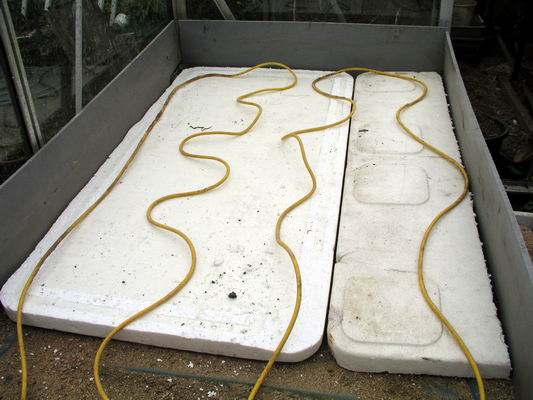 Plunge relined My solution will come as no surprise. I have used some of the many polystyrene fish box lids that we have lying around - the boxes all having been turned into troughs. The lids serves two functions: 1) it is an easy way to keep in the sand without a major re-build and 2) it will act as a thermal insulator, keeping the cold out and the heat in. I just lay the thermal cables on top and then fill it back up with sand. 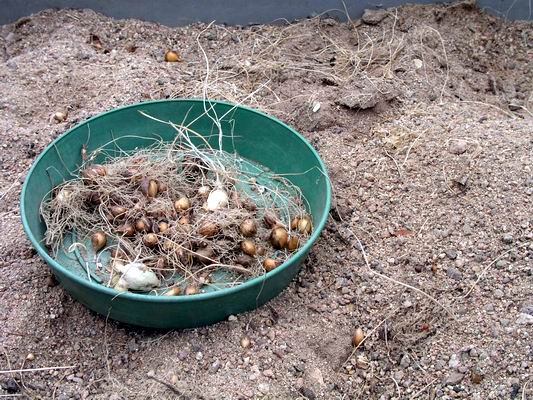 Stray bulbs in plunge Inevitably when I was removing the sand I found hundreds of bulbs, mostly narcissus, which have seeded into the sand. On collecting them I decided to plant them in a fish box. 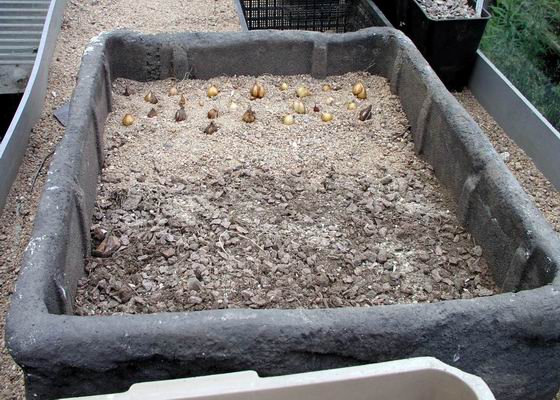 Bulbs in fish box I placed a thin layer of potting compost at the bottom of the box and then a thin layer of the sand from the plunge. Once all the bulbs are spread on this sand layer I will fill the box up with the sand. This will make an interesting experiment to see how well the bulbs will do when I plant them in sand - they always do very well when they seed themselves into sand. 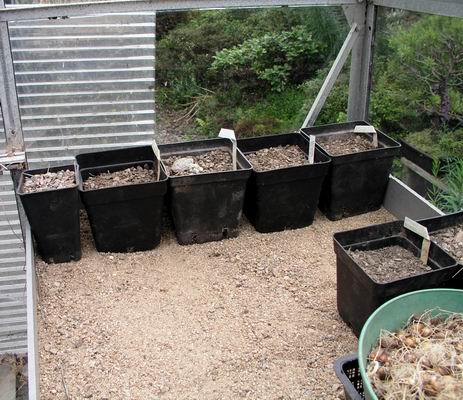 Plastic pots As I am re-potting and filling up this plunge I am using yet more plastic pots. I find that they make more efficient use of the limited space that we have and, as long as we adjust your watering regime slightly, the bulbs do very well in them. The plastic pots do not need plunged but they just sit on a layer of sand. 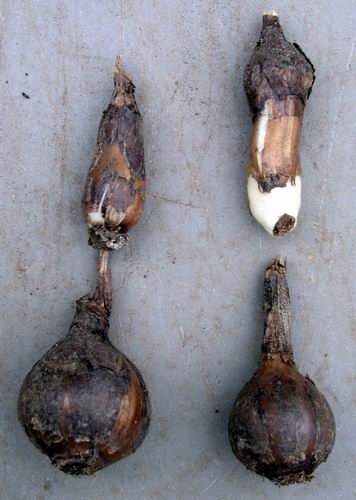 Narcissus bulbs These Narcissus bulbs are of the same species and are from the same pot. The lower two were planted low down in the pot and are happy at that depth; the upper ones were planted about half way up the pot and are elongating to pull themselves down. When your bulbs are elongated they are very unlikely to produce flowers. 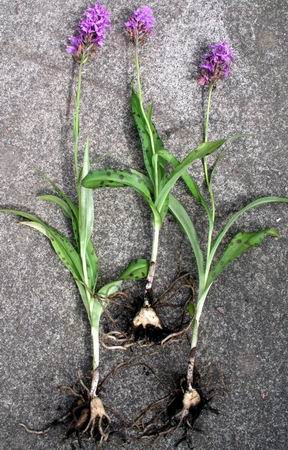 Dactylorhiza I knocked these Dactylorhizas out of their pot to get to the new tubers. 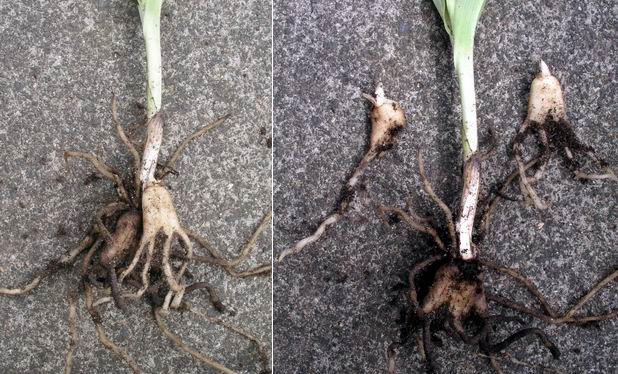 Dactylorhiza tubers On the left the old tuber in the centre supports the flowering stem and on either side of it there is another new tuber. On the right you can see that I have carefully twisted off the new tubers without harm. These I will pot up and keep moist in a shaded frame - they will flower next year. The old tubers with the flowering stems attached have been replaced into their pot and given a good watering and by the end of the season they will have grown another two new tubers. This is making your plants work for you. ^ back to the top ^ |